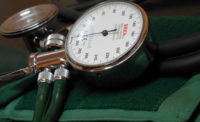Employees with the highest level of job control – such as the ability to make work-related decisions on their own – are less likely to have high blood pressure than those with lower levels of control, according to a study by the National Institute for Occupational Safety and Health (NIOSH) and its university partners.
The researchers found that the association occurred in many different job areas, including management/professional, sales/office, and production. However, in the case of healthcare support workers (for example, home health aides, nursing assistants, dental assistants, medical transcriptionists, pharmacy aides, and phlebotomists), the pattern reversed; high job control correlated with a greater risk for high blood pressure.
Men v. women
Although overall a greater proportion of men than women had high blood pressure, more women in healthcare support and two blue-collar job areas (production; and installation, repair and maintenance) had high blood pressure. The results were similar across racial/ethnic groups.
Control in the workplace includes jobs having a variety of tasks and workers being able to develop their own special abilities.
Increasing job control could help
“Overall, the findings from this study suggest that increasing job control could help decrease the prevalence and incidence of high blood pressure among workers,” according to NIOSH. “Further research could help clarify why women in some occupations are more likely than are men to have high blood pressure and why health care support workers did not have lower blood pressure when their levels of job control were higher.”
The study included more than 2,000 voluntary participants whose average age was 57 years. All worked at least 20 hours per week at the time of the study, from 2002 to 2004.
Blood pressure data was collected by the Multi-Ethnic Study of Atherosclerosis (MESA), funded by the National Heart, Lung, and Blood Institute. MESA recruited study participants from six communities, in Forsyth County, North Carolina; Manhattan and Bronx, New York; Baltimore, Maryland; St. Paul, Minnesota; Chicago, Illinois; and Los Angeles, California.
For more information, click the titles below:
Organization of Work: Measurement Tools for Research and Practice


